It may look like Vermont, but this distinctive natural area is pure Texas, and offers more than stunning fall foliage.
Finding Autumn in Texas: A Visit to Lost Maples
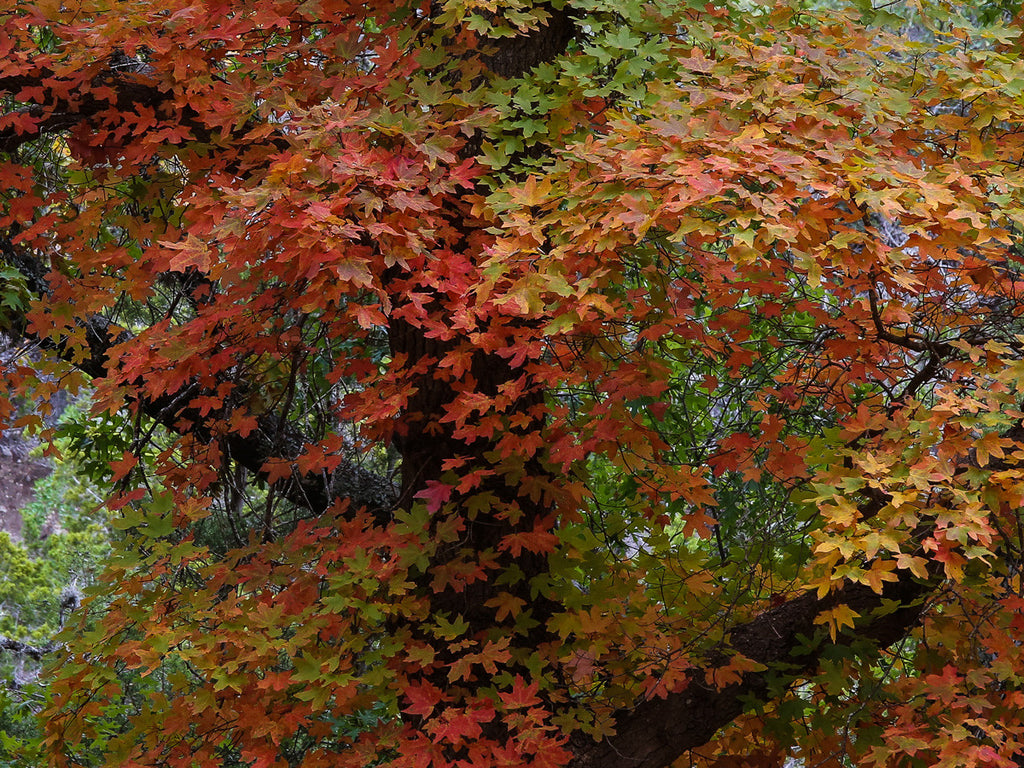
Photos by Jenna VonHofe
According to the Texas Department of Economic Geology, there are twelve distinct ecological regions throughout the state, ranging from the Coastal Plains along the Gulf to the Desert Plateaus that span West Texas. Yet even within this environmental diversity, there are tiny landmarks and independent ecosystems strewn throughout the state that often defy categorization.
One of the most widely regarded of these unexpected gems is Lost Maples State Natural Area, located in the Texas Hill Country about an hour southwest of Kerrville. Among its many other attractions, the state park is best known for its incredible display of fall foliage due to the uncommon concentration of Bigtooth Maple trees that inhabit the park.

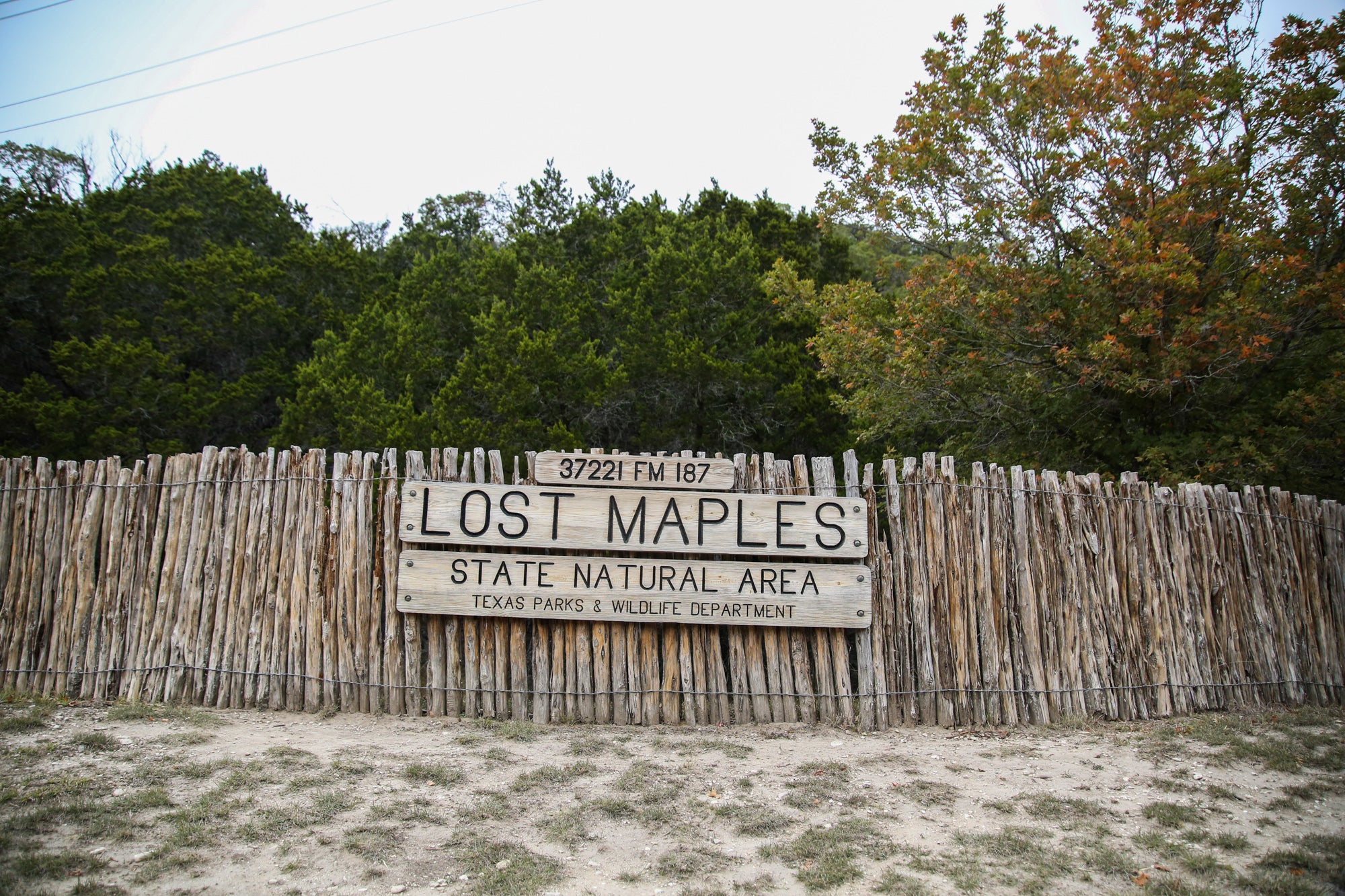
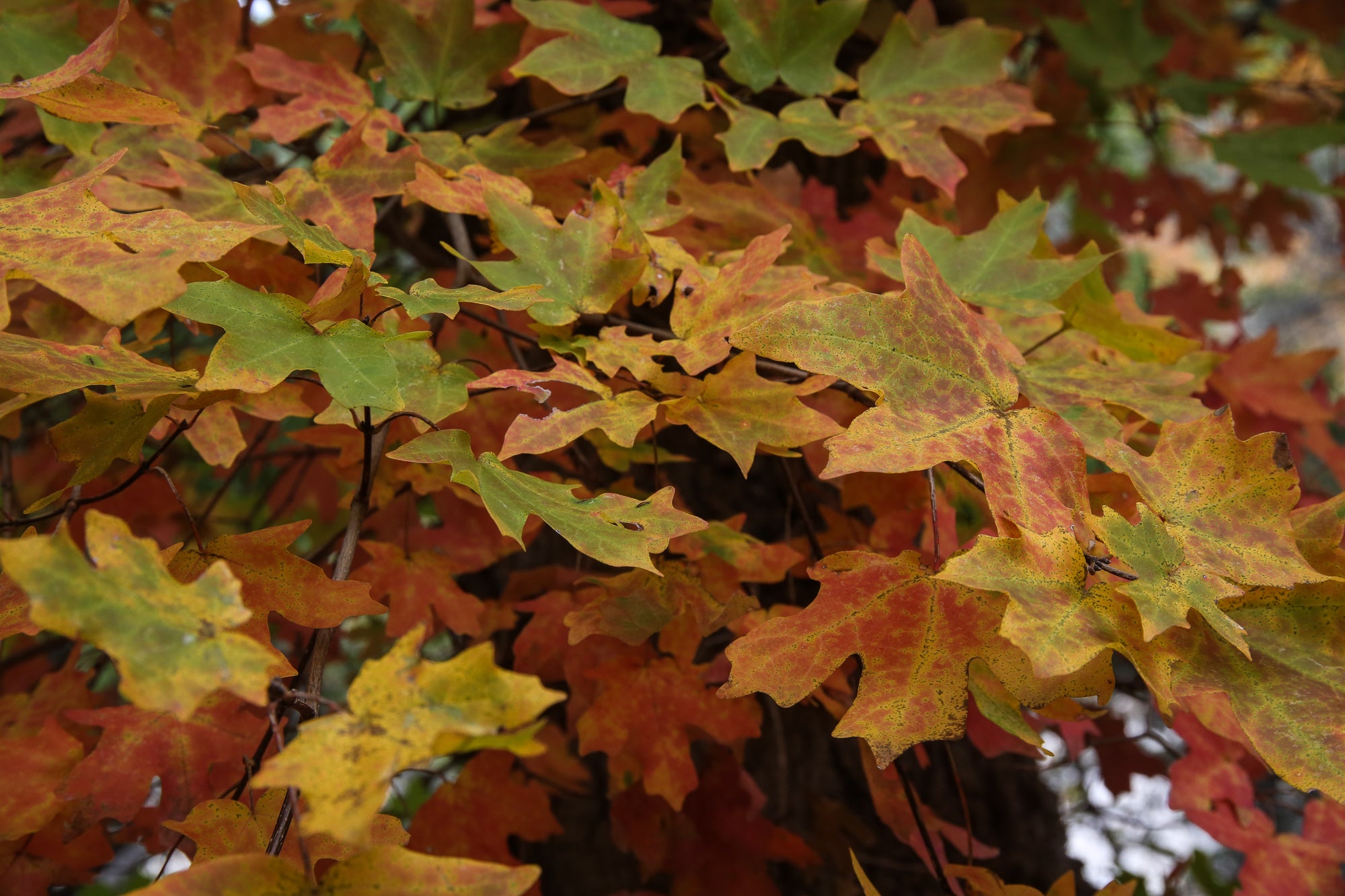

Fall color is a rarity in Texas mostly because the climate isn’t conducive to most varieties of deciduous trees. However, the unique environment of Lost Maples State Park is a notable exception.
The park itself supports a variety of microclimates, largely at the hands of the Sabinal River, which has carved a network of canyons through the limestone that covers the 2,200-acres of parkland. In addition to defining the distinct topography of the area, these canyons create a moist and cool environment that supports an incredible diversity of plant life found few other places in Texas—including the prehistoric Bigtooth Maples that give the park its name.
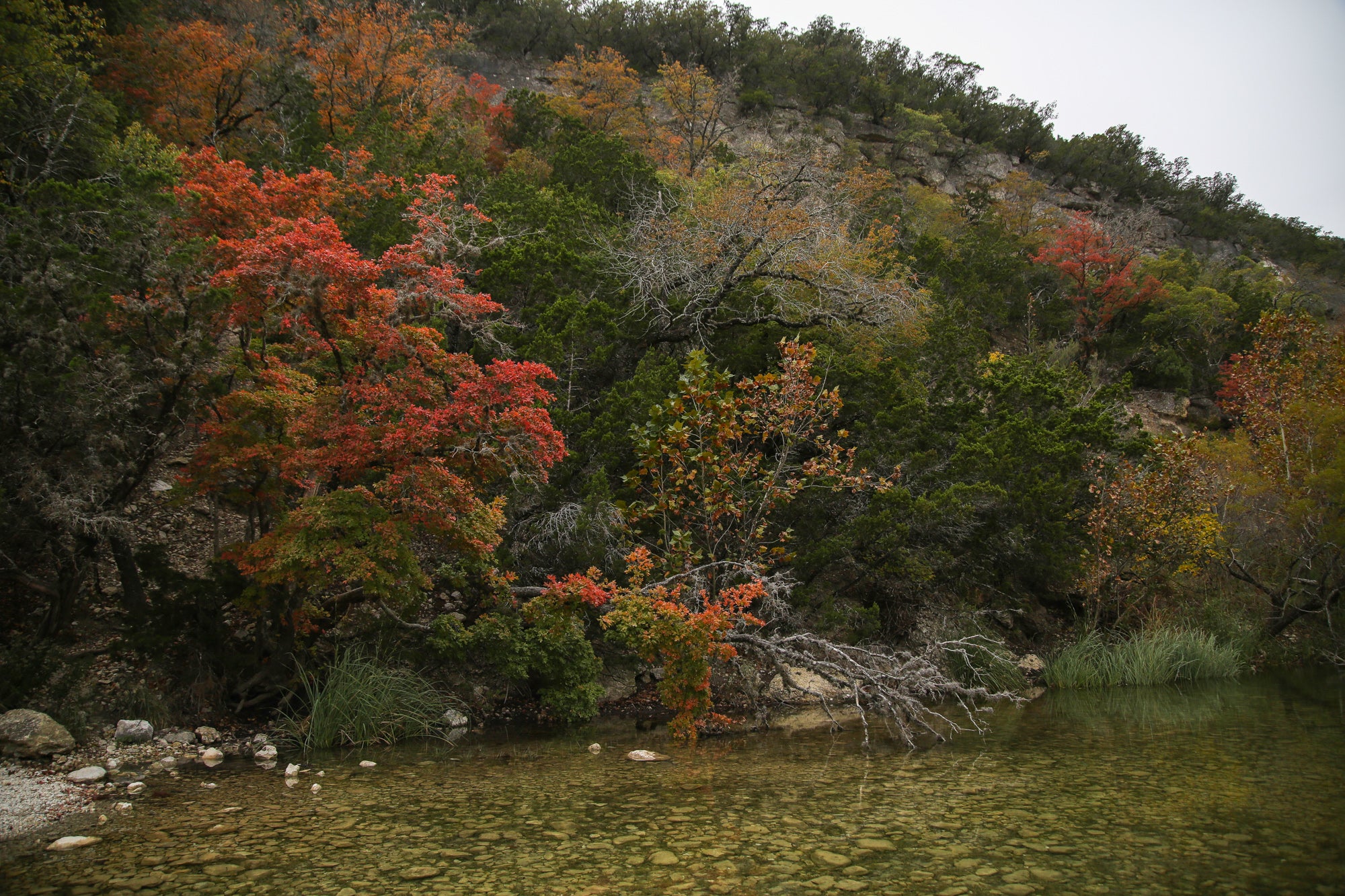
But where exactly did these maples come from? It’s not actually a matter of where—more like a matter of when. During the last Ice Age (roughly 10,000 years ago), the ancestors to the Bigtooth Maple were thriving throughout Texas and even into northern Mexico. Yet as the ice retreated northward, there were only few pockets of this species that were able to survive the changing climate into the present day, where upwards of 200,000 visitors enjoy their beauty year after year.

Partly because of its wide diversity of plants (including other relict tree species left that survived the Ice Age), Lost Maples State Park is a great destination for scenic hiking, backpacking, fishing, and a variety of other outdoor activities. In fact, some even come for the wildlife; bird-watchers from around the world visit each year to glimpse rare and endangered birds that are specific to the region.

The park also boasts other unique finds—even some dating back well before the Ice Age. The limestone riverbeds in and surrounding the park house an assortment of fossils dating back to 350 to 600 million years ago during the Paleozoic Era, when most of modern day Texas was covered by shallow seas. Visitors and rangers who keep a keen eye will often find fossils of prehistoric creatures along the trails and tributaries.

Yet no matter what you’re looking for, whether it’s a unique display of fall color or just a quick getaway, odds are you’ll discover something you didn’t expect at Lost Maples.
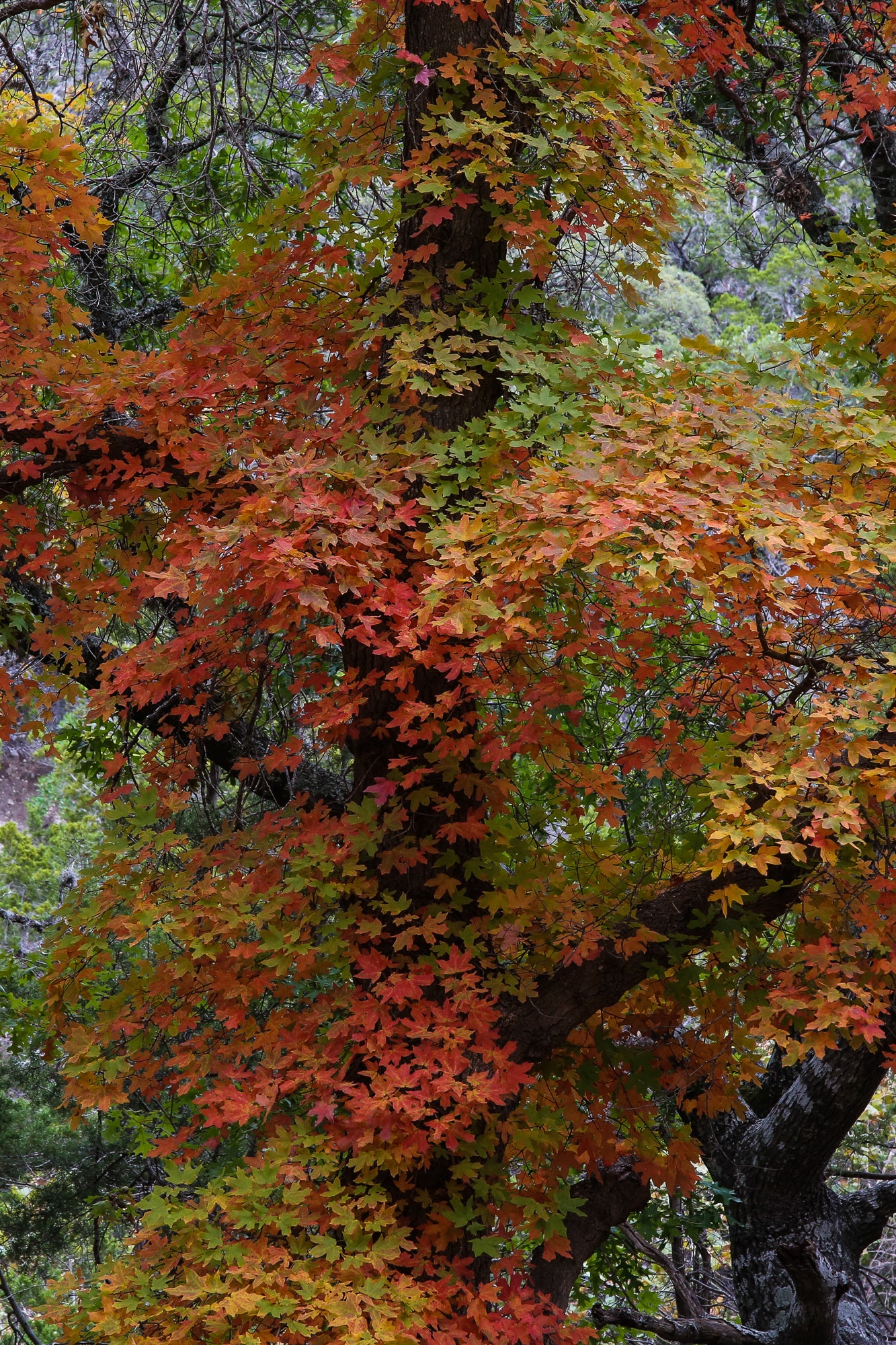
- JE

Comments
Traces of Texas:
Beautiful shots! What a great place Lost Maples is.
Nov 23, 2014
Leave a comment